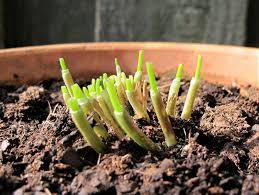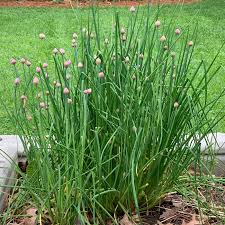Chives are among the most versatile and easy-to-grow herbs. Their vibrant purple flowers attract pollinators, and their mild onion flavor enhances many dishes, from soups to baked potatoes. However, during the winter months, chives die back, leaving gardeners longing for those fresh green leaves. Fortunately, with a simple technique called “forcing,” you can enjoy fresh chives well beyond their typical growing season.
Dividing Chives for Winter Use
Forcing chives involves dividing the plants and growing them indoors to continue producing fresh leaves throughout the winter. Not only does this method extend your harvest, but it’s also an opportunity to propagate new plants. Chives tend to spread over time, and dividing them every few years helps keep them healthy and productive.
The ideal time to divide chives is on a dry autumn day when the soil is moist but not overly wet. Use a fork to lift the clump and shake off excess soil. You’ll find the plant is made up of smaller clumps of elongated bulbs. These can be separated either by hand or, for ease, by using two hand forks placed back-to-back and pried apart.

Once divided, replant one of the clumps back into your garden, where it will rest and regenerate through winter, ensuring you have a strong, established plant for next spring.
Forcing Chives Indoors
Take the divided clumps and pot them up in containers with quality potting soil. Trim back any tired, old foliage, then water the plants thoroughly. Place them in a bright, sheltered area like a cold frame, greenhouse, or even a sunny windowsill indoors. Avoid over-watering and keep an eye on the moisture levels.
Soon, new shoots will emerge. Once they reach about 4 inches (10 cm) tall, you can begin harvesting. Continue cutting back the leaves as they grow to maintain a steady supply. While it’s not always possible to harvest all winter, you should be able to enjoy fresh chives for several months.

Freezing and Extending Your Harvest
If you find yourself with a surplus of chives, consider freezing them. Simply chop the leaves and store them in an airtight container or freezer bag. When you need them, just snap off a handful.
However, it’s important to give your forced chives a break next year. Prolonged harvesting can be taxing for the plants. As long as you’ve replanted one clump back in the garden, you’ll have a fresh supply ready for the warmer months.

Forcing Other Perennials
Chives aren’t the only herb that can be forced indoors for winter use. Other perennial herbs, like mint and French tarragon, can also be grown this way, extending your herb harvest throughout the colder months.
What to Do with New Plants in Spring
When spring arrives, you can either plant the new chive clumps in the garden or keep them in containers. Chives thrive in full or partial sun and are tolerant of a variety of soil types. They are excellent companions in the vegetable garden, attracting bees with their flowers, or as low-maintenance edging in cottage gardens.
Alternatively, share your surplus plants with friends and family. Chives’ attractive appearance and low-maintenance nature make them a favorite gift for gardeners of all skill levels.
By following these simple steps, you can enjoy fresh chives year-round and even expand your herb garden with new plants, all while benefiting from their delightful flavor and pollinator-friendly blooms.
